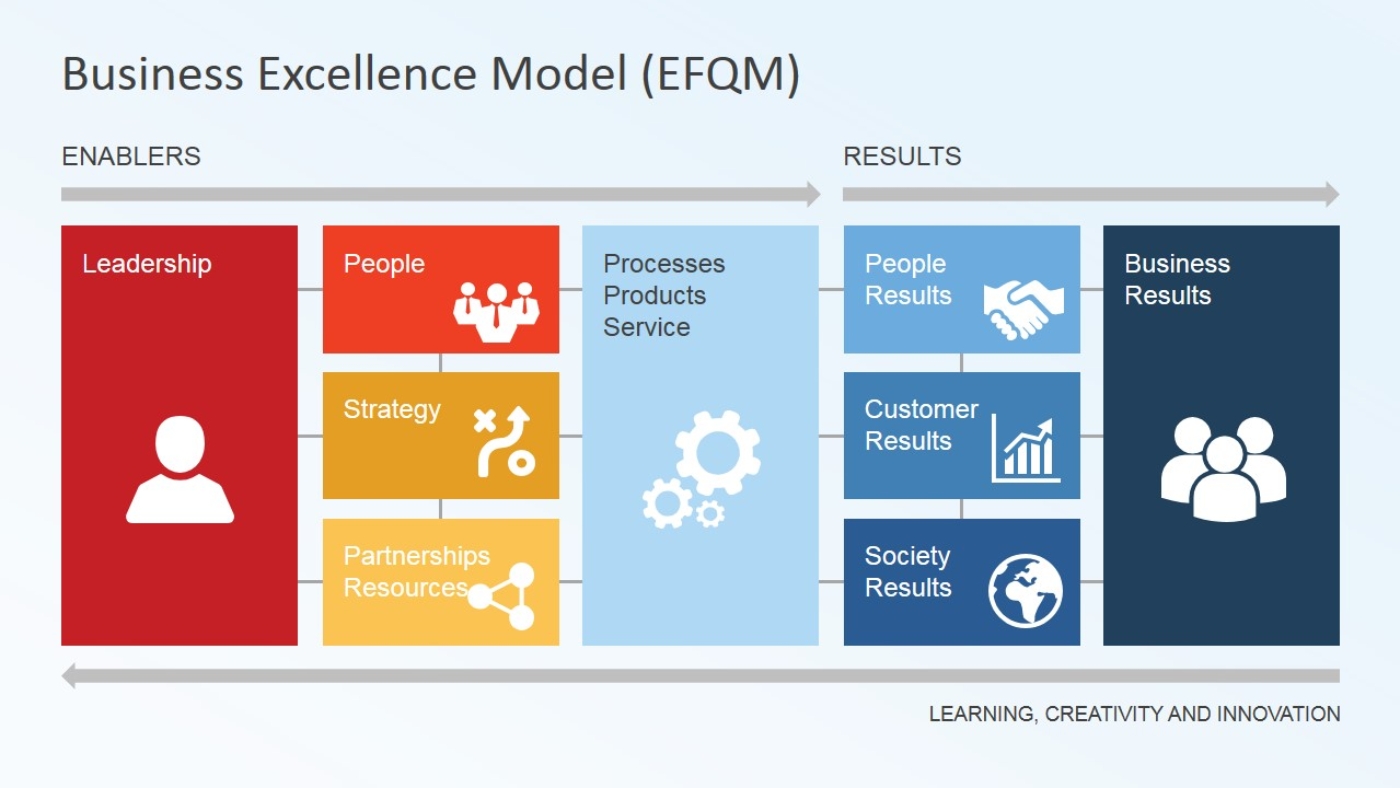The pursuit of business excellence is a key goal for organizations across industries. The Business Excellence Model, developed by the European Foundation for Quality Management (EFQM), provides a holistic framework to assess and improve organizational performance.
In this comprehensive blog post, we will delve into the key aspects of the EFQM Business Excellence Model. By understanding these aspects and adopting a holistic approach to excellence, businesses can enhance their performance, drive continuous improvement, and achieve sustainable success. The EFQM Model is divided into two segments such as Enablers and Results.
Enablers: Driving Organizational Excellence
The Enablers within the EFQM Model represent the foundational elements necessary to create a culture of excellence within an organization. They encompass various areas that organizations need to focus on:
a) Leadership:
Leadership is a cornerstone of the EFQM Business Excellence Model. It emphasizes the importance of visionary and effective leadership that sets clear direction, establishes a strong organizational culture, and inspires employees. Leaders are responsible for creating an environment conducive to innovation, empowerment, and continuous improvement. By demonstrating strategic thinking, fostering collaboration, and nurturing talent, leaders can drive organizational excellence and achieve long-term success.
b) People:
The EFQM Model recognizes that people are the heart of any successful organization. It emphasizes the value of creating a positive work environment, nurturing talent, and promoting employee engagement. By valuing and investing in people, organizations can foster a culture of continuous learning, innovation, and high performance. The model encourages the development of competencies, empowerment, and recognition of employees’ contributions. Engaged and motivated employees are more likely to contribute to business excellence and deliver exceptional customer experiences.
c) Strategy:
A robust strategy is vital for business excellence. The EFQM Model emphasizes the need for a well-defined and coherent strategy that aligns with the organization’s mission and vision. It highlights the importance of understanding customer needs, market dynamics, and industry trends to develop a competitive advantage. A strong strategy provides a roadmap for achieving organizational objectives, identifying key performance indicators (KPIs), and driving sustainable growth.
d) Partnerships & Resources:
Effective partnerships and resource management play a critical role in organizational excellence. The EFQM Model stresses the importance of building strong relationships with suppliers, customers, and stakeholders. Collaboration and shared goals enable organizations to leverage collective expertise, resources, and innovation. Efficient resource management ensures optimal utilization of assets, both tangible and intangible, to achieve organizational objectives and drive sustainable growth.
e) Processes, Products & Services:
The EFQM Model emphasizes the significance of robust processes, quality products, and services. It encourages organizations to adopt a systematic approach to process management, focusing on efficiency, effectiveness, and continuous improvement. By analyzing and optimizing processes, organizations can eliminate waste, enhance productivity, and deliver consistent value to customers. The model also emphasizes the importance of product and service innovation, customer feedback, and a customer-centric approach.
Results: Measuring Organizational Performance
The Results aspect of the EFQM Model focuses on measuring the outcomes of organizational efforts across different areas:
a) People Results:
This area focuses on the impact of organizational practices on employee well-being, satisfaction, and development. It includes aspects such as employee engagement, training and development, and work-life balance.
b) Customer Results:
Customer-centricity is crucial for sustained success. Measuring customer satisfaction, loyalty, and feedback provides insights into the effectiveness of products, services, and customer relationships.
c) Society Results:
Organizations have a responsibility towards society. This area evaluates the impact of the organization’s activities on the community, environment, and ethical practices.
d) Business Results:
Ultimately, organizations aim to achieve sustainable business results. This area assesses financial performance, market share, innovation, and operational efficiency.
The EFQM Model provides a comprehensive framework for organizations to assess and improve performance, focusing on leadership, people, strategy, partnerships, processes, products, and services. By evaluating results, organizations can create a culture of excellence, drive continuous improvement, and exceed customer expectations. Integrating the EFQM Model into practices unlocks potential for growth and success in today’s competitive business landscape.


Add a Comment